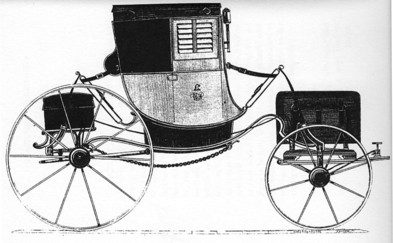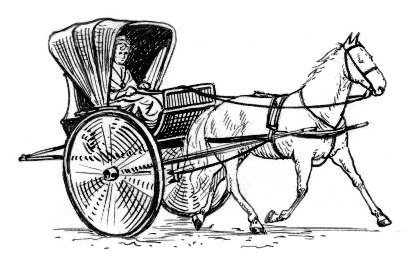During the Regency Era traveling was not easy. The roads were terrible, as was the weather most of the time. In addition, the bandits and highwaymen made traveling not only uncomfortable but dangerous as well.
The actual price of buying a carriage was not prohibitive. But adding the cost of horses, their feeding, the stables, those working at the stables, a coachman, the outriders, and the grooms we can understand that having your own vehicle was not very convenient!

Many members of the ton spent the Season in London—which was both a social and political time of year. In fact, many of them traveled extensively from their country homes to London for the Season!
Like everything else, vehicles were a means of displaying the wealth of each family. This meant that image, status, and money, as well as personal taste, were all factors in choosing a carriage. Most nobles painted their coat of arms on their family carriages! Wouldn’t that look amazing?!
It makes sense for the average reader of our time period to have no knowledge of Regency era vehicles. In this article, I will try to convey to you as much information as I can about some of the vehicles of the time, so as to clarify this topic a little!
If you are interested in learning more, keep reading…
The buggies were small vehicles designed to carry only one passenger. They had two wheels. They were usually drawn by one or sometimes two horses. As for the roof, some were un-hooded and some had a folding or falling top.

Other names for buggies were roadster or trap.
The word ‘carriage’ was common for all the vehicles of the time. Most usually, a carriage referred to a four-wheeled vehicle drawn by two or more horses.

Carts were for professional use, usually by traders or farmers. They were dragged by a single horse, they had two large wheels and a straight, large body to carry goods and the driver.

Leisure vehicles were called chaise carriages. These were usually drawn by small animals, such as ponies. They were usually open and low with four wheels and thus they had greater stability.

This type of carriage was widespread in the postal service of the time. Those were called “Post Chaise” carriages and they were always painted bright yellow.
Nowadays, people are more familiar with coaches. Back then, they had a very large wagon, four wheels, and windows on all sides. These vehicles were able to carry several passengers and were usually drawn by four or six horses, which were controlled by a coachman and/or one or more postilions on an elevated box seat.

A Town Coach was massive and usually sported a coat of arms painted on the doors. A coach together with the horses, harness, and attendants was called a turnout.
For short distances, people at the time used the curricle. This was a light vehicle with two wheels, pulled by two horses. The system of joining the carriage’s body with the horses consisted of a metal bar resting on the horse’s leather straps. Because it was not customary for two horses to drive a two-wheeled vehicle, it was unique and stood out in young men’s preferences.

They were quite fast and agile and, thus, the drivers could show off their driving skills. They were something similar to the sports cars that exist today. It was the perfect vehicle for the racing of the era, but it tipped over easily, so it was dangerous, hence the challenge and allure. Quite fascinating, right?
Four-in-hand was a simple, open vehicle that was drawn by four horses. It was driven by one person.

And, lastly, for this article, I present to you the most popular vehicle for moving around the city—the gig! It was a very light vehicle, with two wheels and a seat wide enough for one or two people drawn by a single horse. Its ability to move quickly within the city made it the ideal vehicle for transporting doctors.

Well, my dear, this is it!
This article’s purpose was to introduce you to the vehicles that existed during our lovely Regency Era…I hope you found it interesting and that you learned a lot!
Thank you for reading…I would love to know your thoughts about this article so, please, reply to this message or simply leave a comment below!
You’re fantastic 🙂
Written by Scarlett Osborne

 Share this book
Share this book